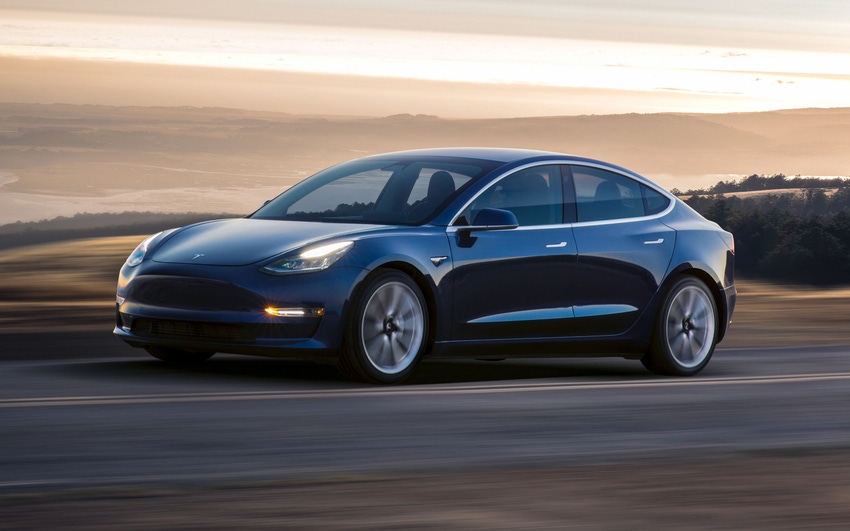Elon Musk lays plans for ride-hailing. Wants to go head to head with Uber and Lyft.
May 17, 2019

Elon Musk’s recently-announced plan to put a million robo-taxis on the road by 2020 is serious, but industry analysts this week questioned whether Tesla Inc. is capable of delivering a single fully-autonomous car, let alone a million, by then.
Musk, CEO of the upstart electric car manufacturer, outlined a plan in late April that would create a new business model, placing his company in direct competition with ride-hailing firms such as Uber Technologies Inc. and Lyft, Inc. As part of the plan, Tesla would incorporate SAE Level 5 driving capabilities in its electric cars, and then would collect 25% to 30% of the fees charged to riders. During a speech to investors and analysts, Musk boldly stated that no other company will be able to compete with Tesla on this front. “From our standpoint, if you fast forward a year, a year and maybe three months, but next year for sure, we will have one million robo-taxis on the road,” he said.
|
Tesla Inc. plans to endow its cars with Level 5 autonomy, enabling them to be used by owners for in the commercial ride-hailing market.” (Image source: Tesla, Inc.) |
The taxis, which would need no drivers, could enable Tesla owners to draw income from their vehicles when they would otherwise not be in use. By pushing a button on a smartphone app, Musk said, owners could put their vehicles into commercial service and reap the benefits of ride-hailing. “The fundamental utility of the vehicle would increase by a factor of five,” he added.
Fantasy or Reality?
Industry analysts contacted this week, however, expressed strong doubts about the viability of the plan. “Game of Thrones has more reality than this,” Sam Abuelsamid, principal analyst for Navigant Research and author of numerous automated driving studies, told Design News. “He’s claiming they will be Level 5-capable with all their cars that have Autopilot hardware, and that’s just not going to happen.”
Analysts said the plan’s outcome seems unlikely for two key reasons. First and foremost is the numbers. “If the promise is a million, fully-autonomous robo-taxis available by next year, that’s absurd on numerous levels,” noted Mike Ramsey, senior director and automotive analyst for Gartner, Inc. “It assumes every car ever made globally by Tesla and assumes a very high volume from now until then. And the vehicles from their early years didn’t even have anything remotely close to the ability to be autonomous.”
The second problem is delivering on the promise of go-anywhere, go-anytime, Level 5 autonomy. “Even if they put very powerful processors in the car, along with radar (sensors) and cameras, that’s not going to be enough,” Ramsey said. “You need to have fallback safety systems, redundancy. If you look at the safety reports published by General Motors and Waymo, they go into a lot of depth about the need for redundant systems.”
During his talk, Musk told investors that the company’s sales volume will enable it to do the testing that is considered so vitally important for the production of fully autonomous cars. The volume, he said, gives Tesla the ability to collect data and test autonomous driving features. “It’s extremely difficult to catch up when Tesla has one hundred times more miles per day than anyone else,” he said.
RELATED ARTICLES:
Musk’s bold claims come at a time when most automakers are wrestling with the difficulties of developing fully autonomous, SAE Level 5 cars. Ford Motor Co. CEO Jim Hackett, for example, recently admitted that the task was tougher than anyone had originally believed. “We overestimated the arrival of autonomous vehicles,” Hackett said during an April speech. “Its applications will be narrow, what we call geo-fenced, because the problem is so complex.” Similarly, Waymo CEO John Krafcik questioned last year whether Level 5 was even possible. “Autonomy will always have some constraints,” he said. For such reasons, most OEMs are forging ahead quietly with autonomy and declining to make predictions.
Musk’s contrarian view, however, successfully highlighted the qualities that have made him, and Tesla, so popular. Followers on Twitter and LinkedIn praised Musk for his vision and his successes with the Model S, Model 3, SpaceX, and Autopilot. “If you aren’t staying ahead of the curve, you are designing a sinking ship. Period,” noted one LinkedIn fan in a typical comment.
Still, analysts wondered aloud whether a technical failure by Tesla’s robo-taxis would cause problems for autonomous cars in the long run. “You have to be conservative about this,” Abuelsamid said. “If you put out something you claim has a certain level of capability, and it falls short, you run the risk of poisoning the well.”
Moreover, Ramsey said that Musk’s claims could actually damage Tesla’s credibility. “Their cars are very cool, very capable -- they have way more capability than other vehicles out there,” Ramsey said. “So when they start making statements like this, it doesn’t help them.”
Senior technical editor Chuck Murray has been writing about technology for 35 years. He joined Design News in 1987, and has covered electronics, automation, fluid power, and auto.
Drive World with ESC Launches in Silicon Valley This summer (August 27-29), Drive World Conference & Expo launches in Silicon Valley with North America's largest embedded systems event, Embedded Systems Conference (ESC). The inaugural three-day showcase brings together the brightest minds across the automotive electronics and embedded systems industries who are looking to shape the technology of tomorrow. |
About the Author(s)
You May Also Like





